Disclosure: We may get commissions for purchases made through links in this post.
Are you considering installing pea gravel on your patio, specifically on walkways? Trying to find the answer if it is comfortable to walk on and suitable for walkways? Don't sweat it; we got it all for you! We have already asked our experts since we are curious about pea gravels, too.
Yes, it is comfortable to walk on even with bare feet. Pets may also walk here comfortably. Pea gravel is an excellent material for almost everything: from your walkways to your patios and driveways. It also prevents weed growth and doesn't decompose, making itself an alternative for inorganic mulch.
We suggest reading throughout the article if you are trying to make up your mind if you install it. Doing so may help you finally decide, primarily if you have known how to install it on your walkways or any patios.
![Beautiful garden beside house with a pea gravel pathway, Is Pea Gravel Comfortable To Walk On? [Is It Good For Walkways?]](https://pavingplatform.com/wp-content/uploads/2022/03/Is-Pea-Gravel-Comfortable-To-Walk-On.-800x1200.png)
Pros and Cons of Pea Gravel
Pea gravel is one of the most sought-after landscaping materials in the market. But if you are meticulous enough, you might want to check its price, installation process, maintenance, and more before purchasing one. Consider its pros and cons when you use it in a particular area, as well.
Walkways Pros
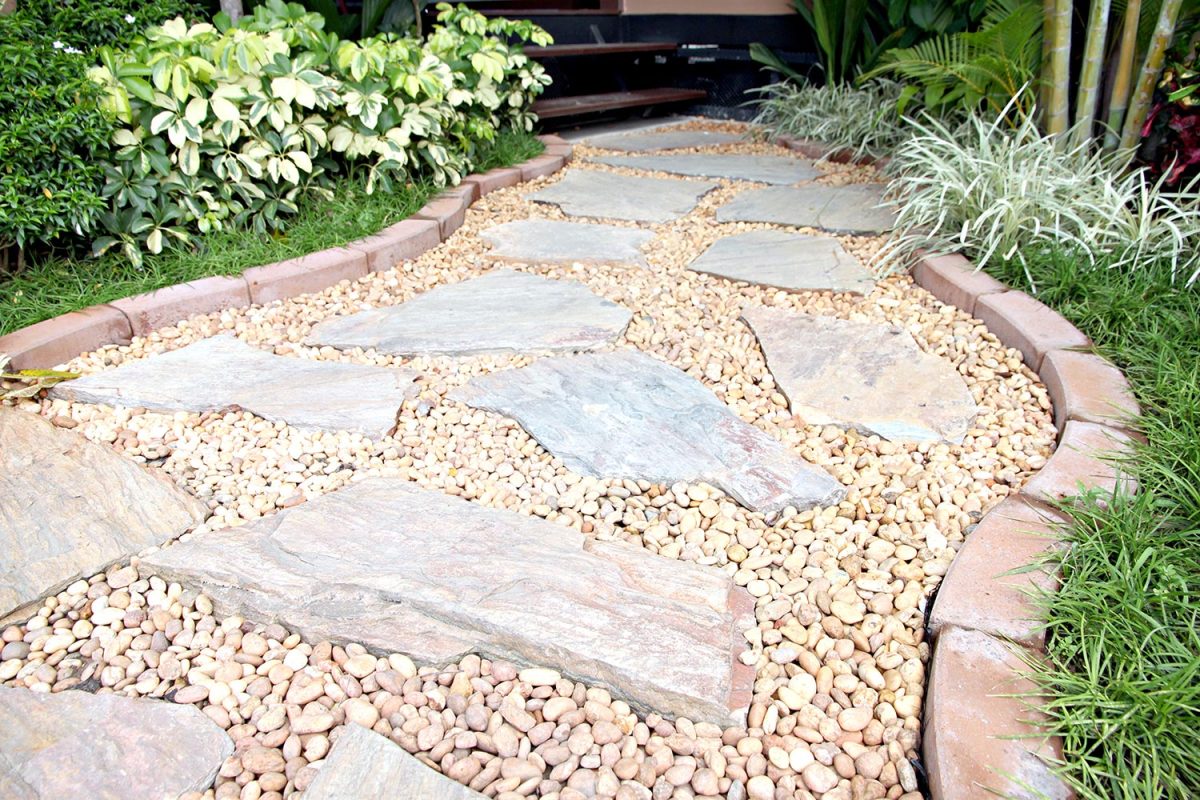
A pea gravel material is way better than using a larger type of gravel. It is much easier and more comfortable to walk on. Even if you try walking on bare feet is possible and bearable. This landscaping material is commonly used in some historic locations, which means you can use it in your garden if you want to produce a classic and timeless feel.
Walkways Cons
The sizes of the pea gravels are not all the same; the smaller ones can wedge themselves in the soles of your shoes. And those gravels may transfer into your home or to other areas. Children may also drag their feet and kick the gravel out of its location. These things are unavoidable, even if there is an existing barricade that encloses the pea gravels.
Another drawback of pea gravel is that it doesn't compact. Trying to push any item across the pea gravel walkway, such as a wheel borrow, will create dips. And you will need to fix that path again by raking. Furthermore, even simply walking on it will develop dips, requiring raking regularly to smoothen the path.
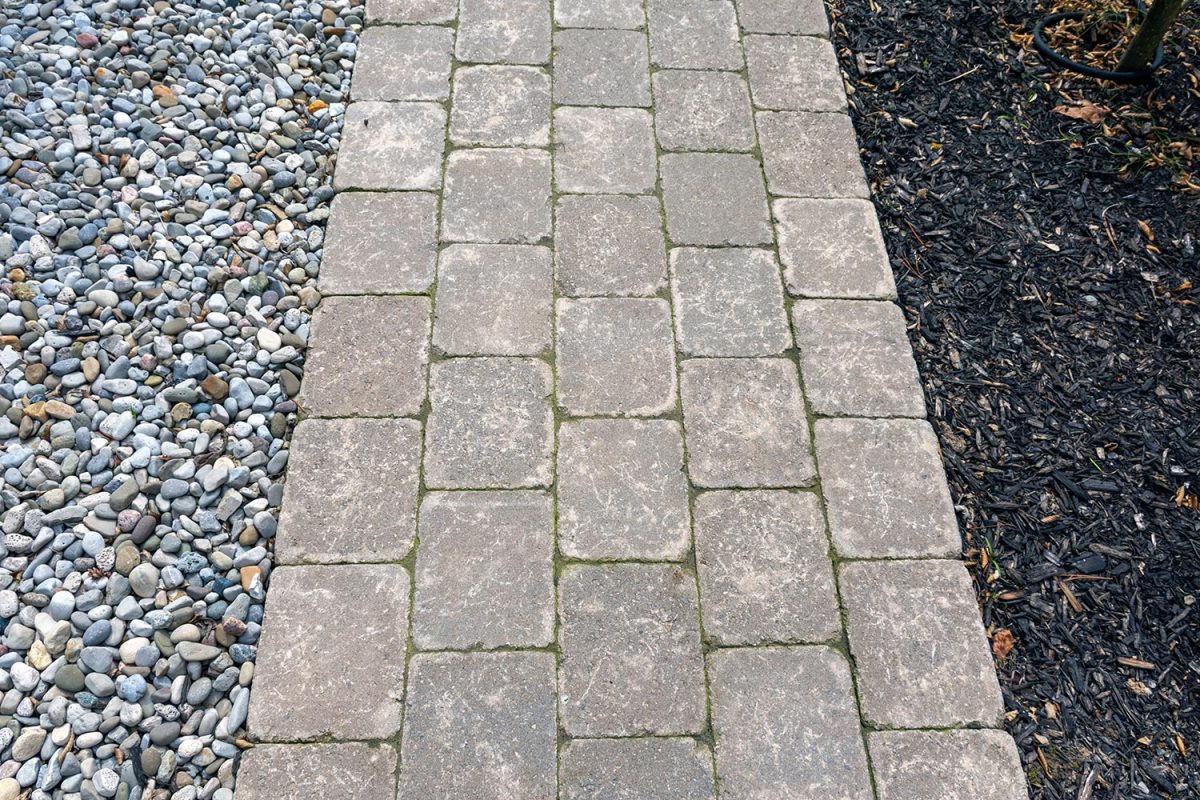
Garden Beds Pros
Pea gravels are helpful for your plants and the entire garden bed. It can maintain and trap moisture underneath rocks and limits weed growth. In addition, it mirrors heat way better than wood mulch.
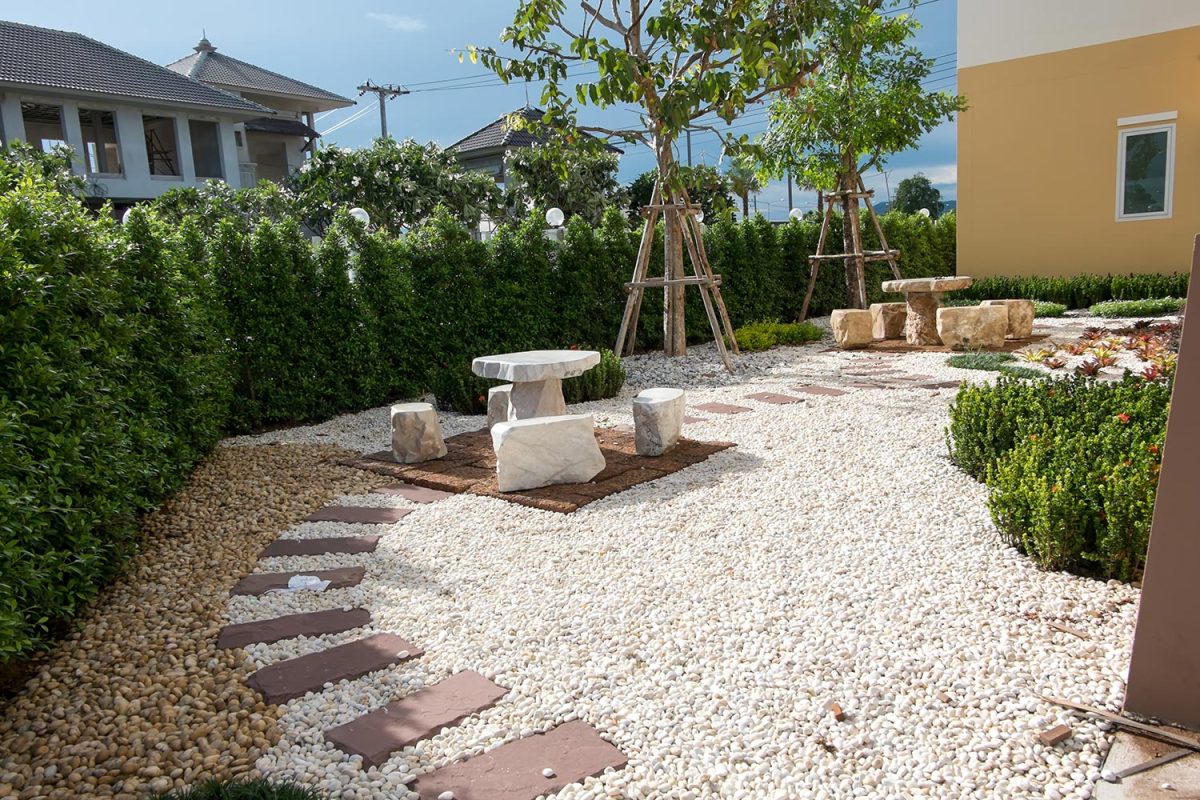
Garden Beds Cons
The smaller gravels will not remain in place without a liner that is at least an inch more elevated than the gravels.
Fish Tanks Pros
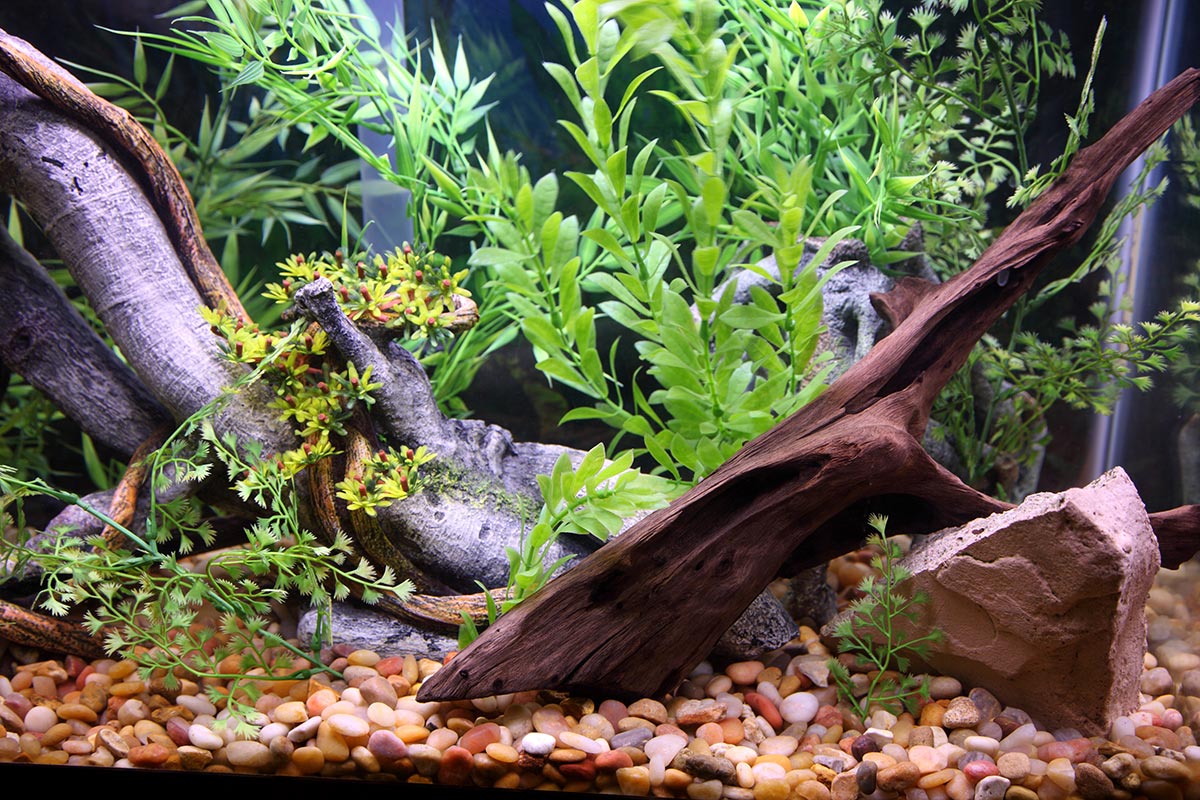
Pea gravel, especially the dyed ones, is ideal for ponds and fish tanks. If you want to match the decor of your room, you can use one in specific colors and purchase it in larger department stores or some pet stores. Additionally, pea gravels can stand out on their own.
Fish Tanks Cons
Pea gravels can sometimes damage the fish tank's pump. The pump can suck the small rocks into its pumping system. Moreover, the pea gravel will require regular cleaning to eliminate algae buildup.
Driveways Pros
It is a good thing that you can use pea gravels on your driveways. First, you can use them over the fresh concrete as a top coat to provide texture on the surface. They can also help in making the concrete slip-resistant.
Driveways Cons
Pea gravels are unfortunately challenging to maintain during and after snow, prone to furrows, and are sometimes messy in appearance.
Advantages Of Pea Gravels
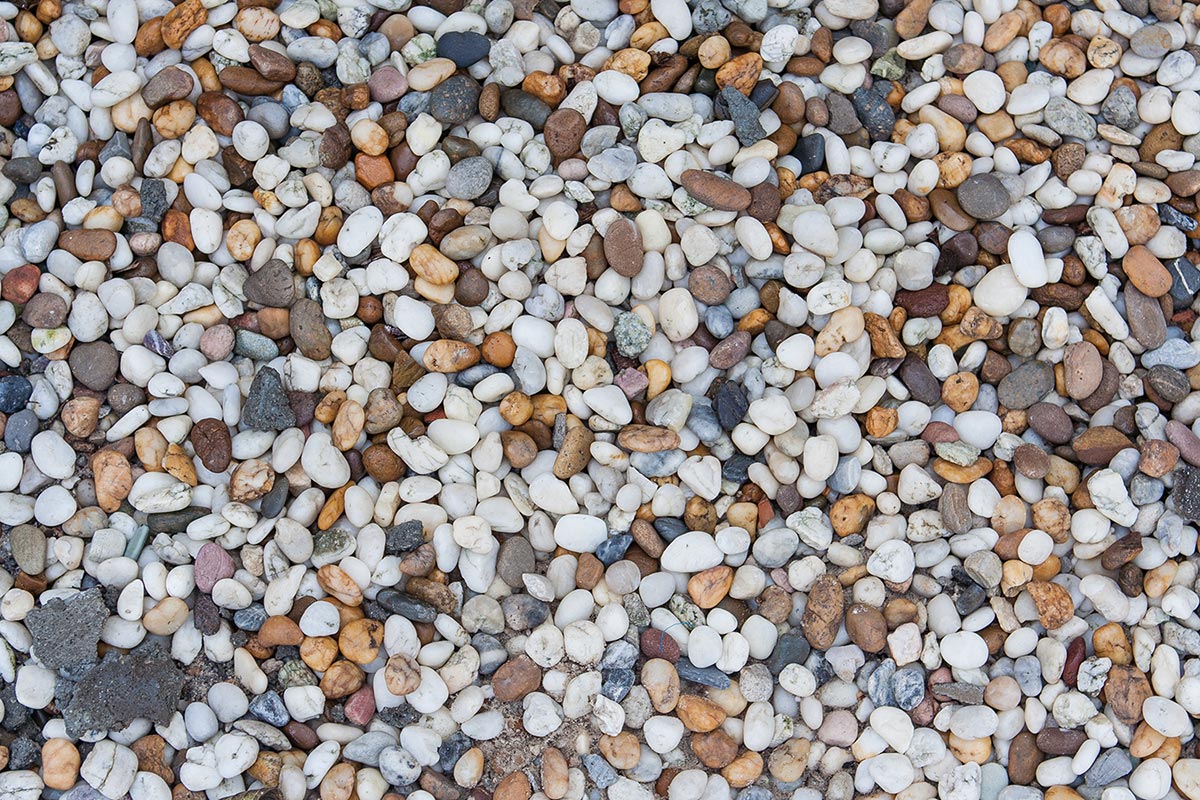
Aside from the earthy attractiveness of pea gravel, it still has a bunch of advantages to offer:
Cost Effective
If you compare pea gravel to other patio materials, its inexpensiveness in its costs and the installation will save you much money. You can also put it down yourself.
Instant Drainage
You don't need to think about your pea gravel patio when there's heavy rainfall because the water will go through the pea gravel and straight into the ground. You don't have to incline your gravel patio just like patio pavers to achieve proper drainage since it can naturally drain alone.
Excellently Versatile
Pea gravel is highly versatile. Whatever pea gravel shape you choose for your patio, it will complement the design. It will show beyond doubt that it is suitable for every material.
Installing A Pea Gravel Patio
Just in case you have made up your mind, and you want to install pea gravel on your patio, keep these in mind:
Landscape Barrier
You will need to use a landscaping fabric underneath the patio to separate the pea gravel and dirt. Using one will prevent your patio from ending up sloppy in a few seasons. Moreover, the landscaping fabric will suppress weed growth.
Check this Landscape Barrier on Amazon.
Surface
Pea gravel tend to shift underfoot since it is a loose material. So, if you want to prevent the shifting of the pea gravel beneath the patio, we suggest you place a honeycomb stabilization layer on top of the landscape fabric. After laying the stabilization layer, fill it all up with pea gravel.
Check this Honeycomb Stabilization Layer on Amazon.
Maintenance
One very good advantage of a pea gravel is it's easy to maintain. Indeed, it is constantly having dips, however, you will just have to rake it to get it back to its usual form. You will just get a little challenged when we talk about snow; that is the real deal! You can remove light snow with a leaf blower, heavy snow, on the other hand, needs to be shoveled thickly then melt with salt.
Check this Electric Leaf Blower on Amazon.
If you want to make your walkway patio appealing to the eyes but with a low cost, you should consider incorporating a pea gravel to it. Installling it by yourself, combined with little to no maintenance is already a huge catch.
How To Install Pea Gravel
If you are going to have a do-it-yourself pea gravel installation on your patio, you must follow these steps:
Step 1
Mark out the patio using a marking paint or your garden hose. Make sure that everything on your patio will all comfortably fit in the space.
Step 2
Dig the area out at a four and a half inch depth. We suggest you use a square point shovel in digging to create clean edges and make the area as level as possible. In addition, you must clean the surface; clear all the roots, rocks, and debris you can see.
Trying to find a Square Shovel? Check this out on Amazon.
Step 3
Inspect the level, making sure the pea gravels are properly distributed. Using a tamper, tamp down all the high spots and fill the low spots with more pea gravel. However, if the area is too wide, you may want to consider renting a plate compactor.
Step 4
After tampering, you will now need to create an edging or a border to enclose your patio area. You may choose between metal edging, stone pavers, or treated lumber materials to use for the edging process.
Choose an edging that can hold the small gravels and leave about a half-inch edge over the final gravel surface.
Step 5
Fill in the base layer with gravel consisting of three-fourth inch crushed rock pieces combined with rock dust. The crushed rock's primary purpose is to add stability to the upper layer of gravel. Using your garden rake, evenly spread the material to a depth of about to inches. Spray the gravel with a bit of water and tamp it carefully and occasionally.
Step 6
After filling in the base layer, you will need to lay the landscape fabric over it to avoid the pea gravel mixing and stop the weeds from taking roots. Using landscape fabric stakes, fasten the overlapping seams and the edges of the fabric.
Step 7
For about two and a half inches depth, add the pea gravel. Use your garden rake again to smooth all the surfaces. Fill all the low spots with more gravel as you go. Remember that the border should be higher for about half an inch than the gravel to help hold the small stones in place. Use a hand tamper for this one if you need to tamp it down.
Step 8
Cut the excess landscape fabric as it must.
In Closing
Pea gravel is one of the most sought-after landscaping materials because of its advantages. Who would want to have an attractive patio at a low cost, right? And not to mention that you can install it with almost any patios, alone.
We hope that we have answered your main question and the questions that ran through your mind accurately.
If you'd like to know more about gravel, we have these articles that may be of interest to you.



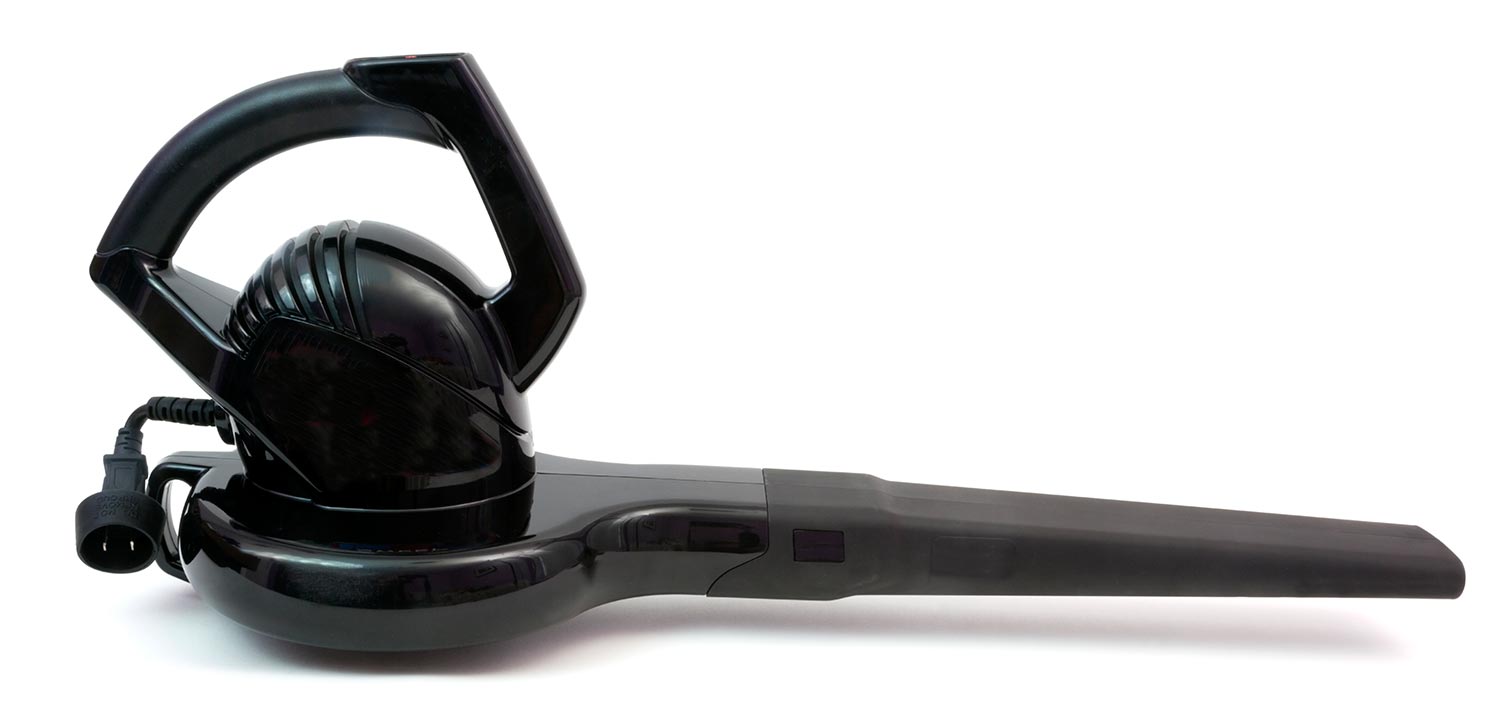



![Vibrant Red Paver Stone Path, Can You Spray Paver Sealer? [How To Apply It]](https://pavingplatform.com/wp-content/uploads/2022/04/Vibrant-Red-Paver-Stone-Path-600x400.jpg)
![Properly laid out red pavers for a garden, Can You Tint Paver Sealer? [And How To]](https://pavingplatform.com/wp-content/uploads/2022/04/Properly-laid-out-red-pavers-for-a-garden-600x400.jpg)
